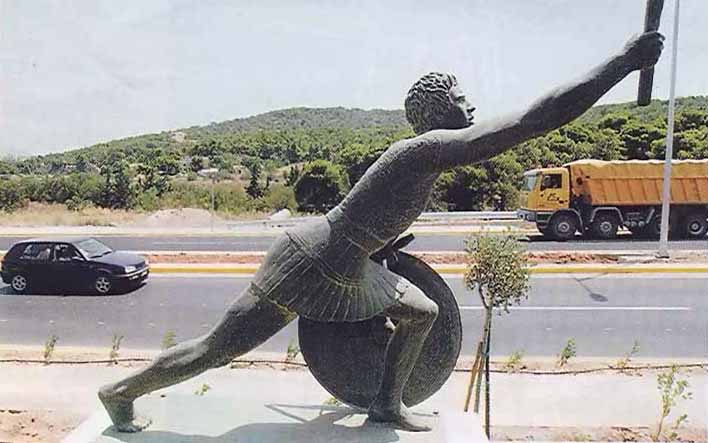
08 May A short history of running: From Pheidippides to London Marathon entry madness
priodA long time ago it was one man against 26.2 miles. Things are very different in 2025!
Although the distance Greek messenger Pheidippides actually ran is up for debate, one thing isn’t. The effort killed him!
Despite that inauspicious start, marathon running has become increasingly popular – to the point where major events are fighting among themselves for top billing and to attract the most competitors.
Take the London Marathon. The roads of our capital are, once a year, not paved not with gold but with the dreams of thousands and thousands of runners, from Olympic champions to those dressed as a giant fridge.
There were 56,000 of them this year. And that number is only likely to increase, with 1.1million runners having applied for the 2026 event.
But today I wanted to make like Cher and ‘turn back time’ to a very different period for runners…
The origins of the marathon
It was back in 490BC when the unfortunate Pheidippides was tasked with running from Marathon to Athens to announce Greece’ victory over the Persians.
After shouting out the news, the hapless messenger collapsed and died – but the story of his epic run caught on.
Indeed, it became so famous that come the first modern Olympics in 1896, a 25-mile race celebrating his efforts was created. It was called a marathon.
Just a year later, one of the world’s most famous events was born when Boston hosted its first marathon. The modern race era was underway.
The UK’s first running boom
The ‘jogging’ boom as it was often called of the late 1970s and 1980s saw a huge surge in interest in road running leading to the creation of the London Marathon and a host of other events.
Inspired by a similar boost in popularity in America, jogging became seen as a way of keeping healthy and having run rather than simply an activity for elite athletes.
The first Sunday Times Fun Run – which took place in Hyde Park in 1978 – attracted thousands of runners, while back in the States the Boston Marathon grew from 1,000 competitors n 1970 to 8,000 in 1979.
Accompanied by the growth of running magazines like Marathon Runner, Athletics Today and Running Review, the sport also benefitted from the success of the likes of Steve Cram and Seb Coe at the top level.
A 21st century phenomenon
As we got closer to the present day, running witnessed another boom, perpetrated by an increasing number of women runners and technological advancement.
Incredibly, it wasn’t that long ago that endurance running was considered too hard for women – don’t believe me, just look up Kathrine Switzer.
Thankfully, things have changed and, although there is still a way to go in some cases, races have become far more welcoming for women. A new generation of women, who grew up growing sports, started to embrace running and have been inspired by athletes as varied as Jessica Ennis-Hill, Paula Radcliffe and Jasmin Paris.
Meanwhile, the internet provided a new way for runners to discover races and started to equip them with ever more varied ways of tracking their progress, from smart watches to Strava segments.
Instagram, Facebook and other social media platforms have allowed people to share their stresses and successes, powering others forward to give the sport a go themselves.
What next?
These days, more and more people are giving running a go. The sport is far more egalitarian than ever – if you run, you’re a runner.
The number of running clubs available is on the up, while people are cottoning on to the idea that being a runner allows you to challenge yourself in a host of different ways – from a 5k sprint to power-walking an ultra (or vice versa for some!).
A lot has happened since Pheidippides took to his heels. His may be a tragic story, but the legacy of the event – and sport – he inspired goes from strength to strength.


